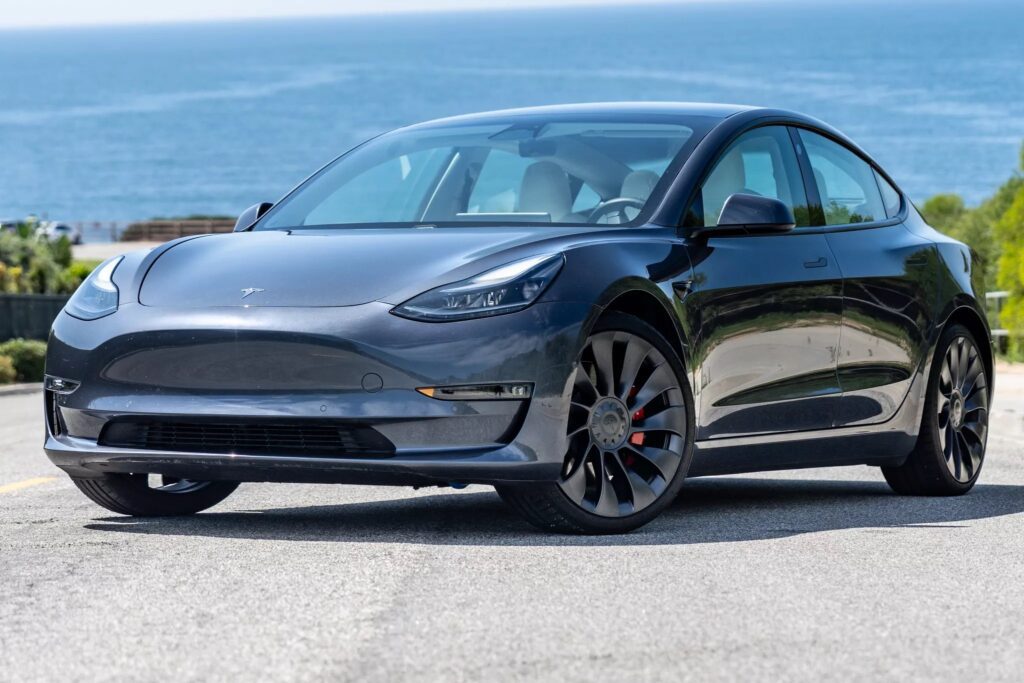The U.S. Treasury regarding federal electric vehicle (EV) tax credits has come into effect on January 1. This development impacts Tesla‘s Model 3 lineup, making the Performance variant a standout choice for budget-conscious buyers in 2024.


Changes in Model 3 Eligibility
Effective immediately, the Long Range (LR) and Rear-Wheel-Drive (RWD) configurations of the Model 3 no longer qualify for the $7,500 tax credit. However, the Performance model remains eligible, making it an attractive option for budget-conscious buyers.
Performance Model 3 Pricing Advantage
The current pricing of the Performance Model 3, factoring in the tax credit, positions it as the second most affordable configuration within the Model 3 lineup. Despite the eligibility changes, the RWD trim retains its status as Tesla’s most economical sedan.
Global Launch and Potential U.S. Debut of Model 3 Highland
This alteration in Model 3 eligibility coincides with the global launch of the redesigned “Highland.” Although not yet available in North America, sightings of the Model 3 Highland in the U.S. suggest that its U.S. launch could be imminent, with speculations of a related announcement from Tesla this month.
Ongoing Eligibility of Other Tesla Models
While the Performance variant stands as the sole eligible Model 3 trim, other Tesla models, including Model X and Model Y variants, continue to qualify for the federal tax credit. Understanding the IRS guidelines is crucial, with a maximum MSRP cap for different vehicle types and income thresholds.
Additional Incentives and Regional Variations
Buyers in certain regions, such as Colorado, can gain even more savings, with new EV purchases eligible for up to $5,000 in tax incentives that can be stacked with the federal credit.
Cybertruck’s Current Ineligibility and Future Potential
Notably, the Tesla Cybertruck currently does not qualify for the federal incentive, possibly due to exceeding the IRS credit’s MSRP price cap. However, it’s worth mentioning that the Cybertruck AWD variant, though yet to begin deliveries, holds the potential to qualify in the future.
Conclusion
Tesla’s Model 3 landscape has undergone a substantial shift with the updated federal EV tax credit guidelines. As the Performance model emerges as an attractive option, potential buyers must carefully consider the evolving eligibility criteria and regional incentives when making their purchasing decisions.
ALSO READ :-
Tesla Model S and Model X,Achieve Five-Year Sales Highs in Q4
Revamped U.S. Electric Vehicle Tax Credit Sparks Changes in 2024
SOURCE : TESLARATI
FAQs
Why did the U.S. Treasury update guidelines on federal electric vehicle (EV) tax credits, and how does it affect Tesla’s Model 3?
The U.S. Treasury updated guidelines to refine EV tax credit eligibility. As of January 1, the Long Range (LR) and Rear-Wheel-Drive (RWD) configurations of Tesla’s Model 3 no longer qualify for the $7,500 federal tax credit. These changes impact the affordability of certain Model 3 options.
What sets the Performance Model 3 apart, and why is it still an appealing choice for buyers despite the eligibility changes?
The Performance Model 3 remains eligible for the federal tax credit, positioning it as the second most affordable Model 3 configuration. Its performance features, coupled with the continued eligibility, make it an attractive choice for those seeking a balance of speed and cost savings.
How does the global launch of the redesigned “Highland” affect the U.S. market, and when can we expect it to be available in North America?
The global launch of the Model 3 Highland indicates potential expansion to the U.S. market. While not available in North America yet, sightings suggest its imminent launch, with speculation about a related announcement from Tesla this month, offering buyers an additional option in the Model 3 lineup.
Which other Tesla models remain eligible for the federal tax credit, and are there additional incentives available in certain regions?
Despite the changes to Model 3 eligibility, other Tesla models such as Model X and Model Y variants still qualify for the federal tax credit. In regions like Colorado, buyers can enjoy further savings, with new EV purchases eligible for up to $5,000 in tax incentives that can be combined with the federal credit.
Why is the Tesla Cybertruck currently ineligible for the federal tax incentive, and is there a possibility for eligibility in the future?
The Cybertruck’s ineligibility may be due to exceeding the IRS credit’s MSRP price cap. While the exact reasons are unclear, it’s worth noting that the Cybertruck AWD variant, though not in delivery yet, holds the potential to qualify for the federal tax credit in the future, providing prospective buyers with a chance to benefit from incentives.
